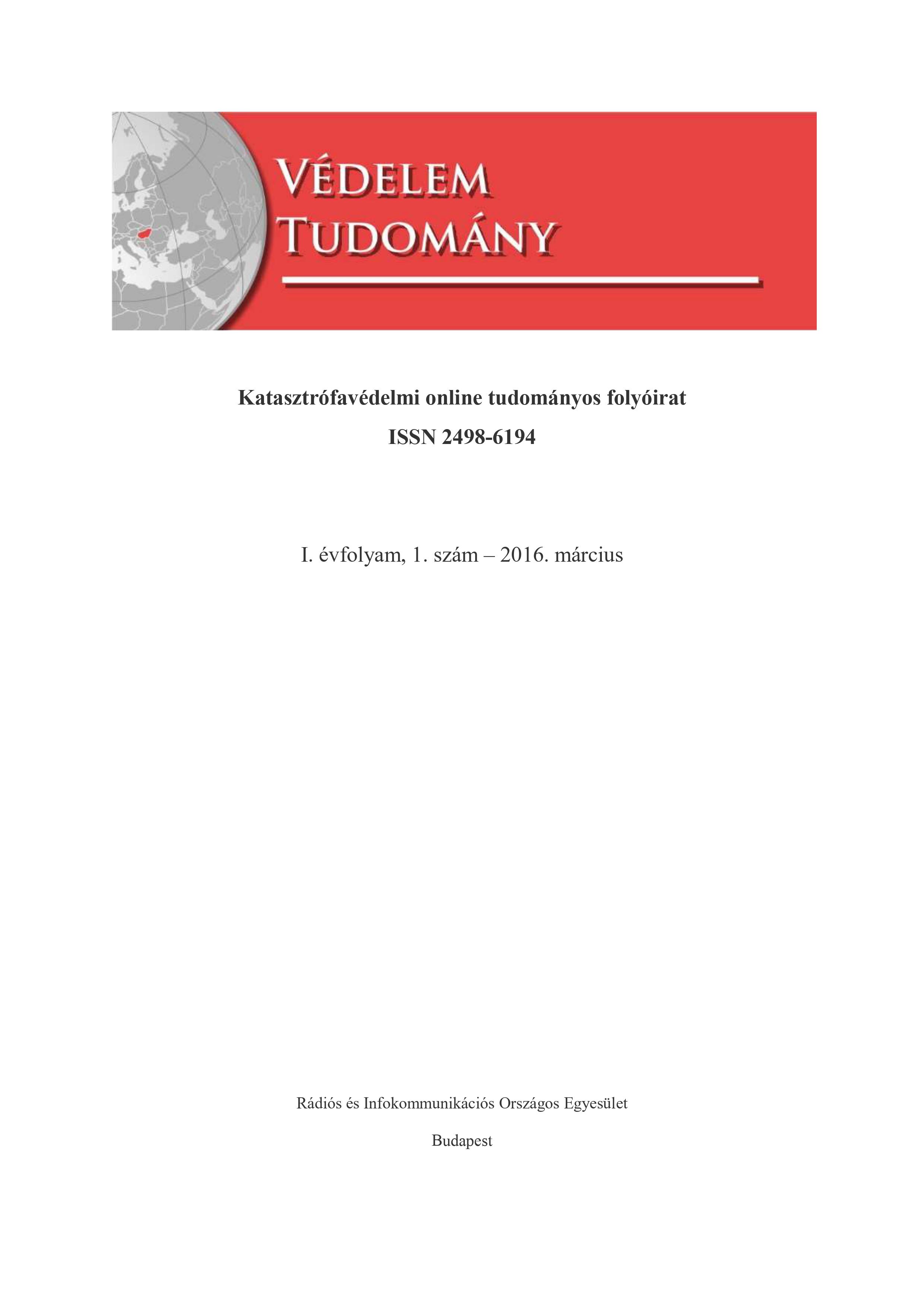Research of the application of anhydrous fire fighting foam
Abstract
In hazardous industry, especially in the fields of oil and chemical industry, energy sector or transportation, there is an everyday challenge of safe handling of different flammable liquids and liquefied gases. In the course of responding to emergencies the most frequently used materials are fire fighting foams available in wide range. When mentioning fire fighting foams, mainly water-based foams come into mind. Apart from some special experimental solutions fire fighting foams, suitable for fire fighters consist of foamed-up solution of foam agent and water. As an alternative of this traditional fire fighting foam agent and extinguishing material, some years ago a new extinguishing agent turned up, named
DryFoam, of which application does not need any water. For the time being the test of these oil and water repellent hollow beads, which is a buoyant fireproof material have been tested only in research phase. It might be able to open up new horizons in terms of safe storage and application of hazardous materials. In this article the author summarizes some related research works in connection with the above presented DryFoam material, which was developed by Trelleborg Offshore Co., based in Boston. By analysing the research results of the centres dealing with the development of fire prevention and fire fighting of flammable liquids the author evaluates the inherent possibilities of applying this new material group.
References
Szőcs István, Az éghető folyadékok tárolótartályai tűzeseténél keletkező elsődleges, és a tűzoltási technológiák alkalmazása közben okozott másodlagos környezeti terhelés csökkentésének lehetőségei az oltási paraméterek módosítása révén, Doktori (PhD) értekezés, Budapest: ZMNE KMDI, 2005, p. 103.
Szőcs István, „Az instant habbal oltás mobil változata; Konferencia előadás: „Tűzoltás és vegyi elhárítás az Európai Unióban; Százhalombatta.2003. október 16.,” in FER Tűzvédelmi Szolgáltató Egyesülés, SZázhalombatta, 2003.
Zólyomi Géza, „Tűzoltási módok környezetvédelmi hatásai; ISSN 1788-1919,” Hadmérnök, pp. 70-87, III. Évfolyam 1. szám - 2008. március .
Bob Kelly, „DryFoam vapour suppression spheres; Konferencia kiadvány: Ipari Létesítményi Tűzoltóságok 7. Nemzetközi Konferenciája; Budapest, 2013. november 27-28. Compact Disk, ISBN 978-963-08-7588-2,” in FER Tűzoltóság és Szolgáltató Kft., Százhalombatta, 2013.
Bob Kelly, „Dry Foam Technology; ISSN 0749890X,” Industrial Fire World Vol.26, 2014 Summer.
Bob Kelly, „Vapour / fire suppression for LNG spill containment: DryFoam; 8th International Conference for Industrial Fire Brigades; Budapest 2015 november 10-11.; Compact Disk; ISBN 978-963-12-4086-3,” in FER Tűzoltóság és Szolgáltató Kft., Százhalombatta, 2015.
Bob Kelly, „Using dry foam for storage tank vapor suppression,” BIC Magazine, p. 52, 2013. June/July.
Bob Kelly, „Bob Kelly: Dry foam for storage tank fire prevention, fire suppression;,” BIC Magazine, p. 118, 2013. August.
Hiroshi Koseki, „Fire-fighting against post earthquake tank fires; 8th International Conference for Industrial Fire Brigades; Budapest 2015 november 10-11.; Compact Disk;
ISBN 978-963-12-4086-3,” in FER Tűzoltóság és Szolgáltató Kft., Százhalombatta, 2015.
Kuang-Chung Tsai, Hiroshi Koseki, Robert Kelly, „Effect of floating beads on the flash/fire temperatures and occurrence of boilover;,” kézirat, 2016.
Vytenis Babrauskas, Richard D. Peacock, „Heat Release Rate: The Single Most Important Variable in Fire Hazard; 0379-7112/92;,” Fire Safety Journal, pp. 255-272, 1992.




